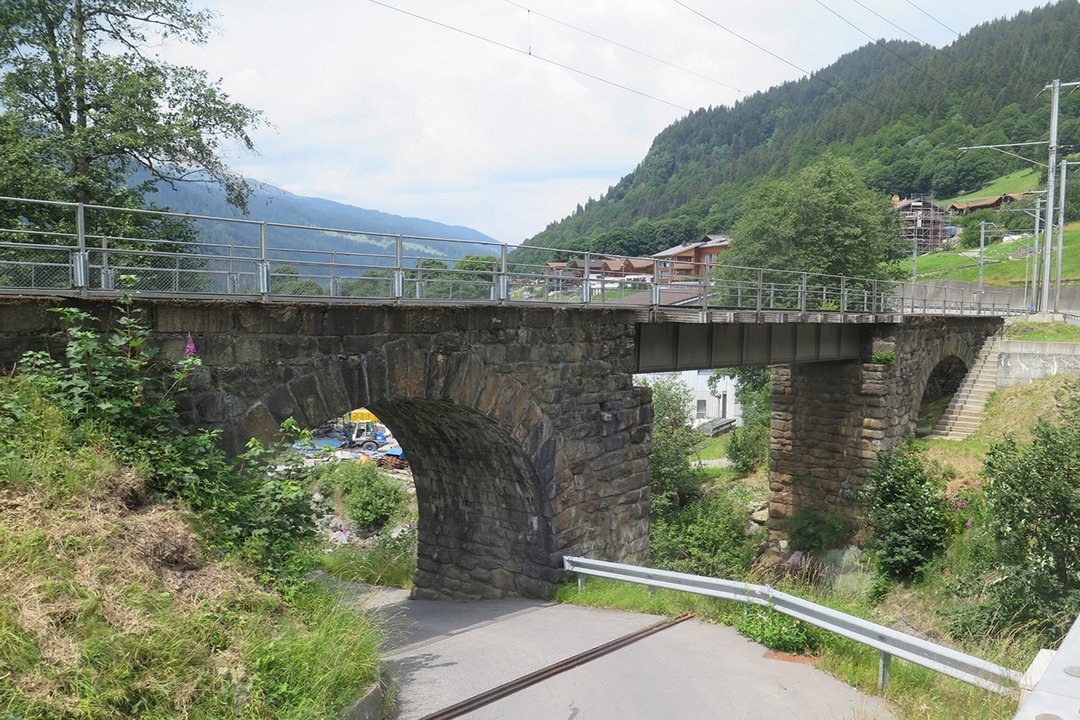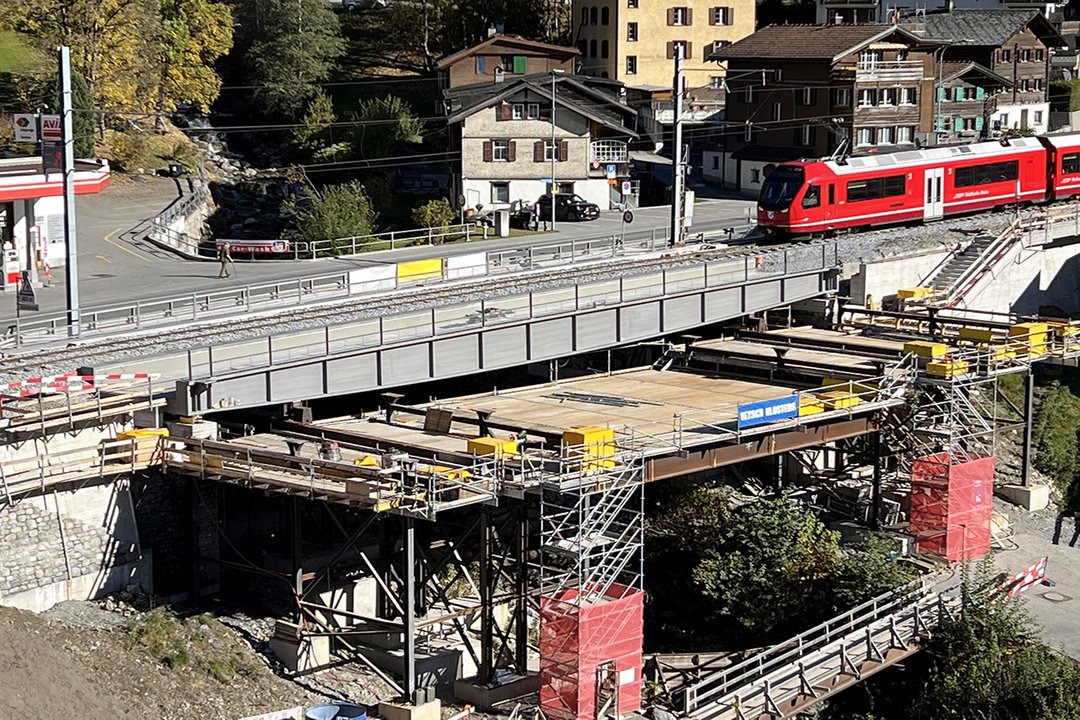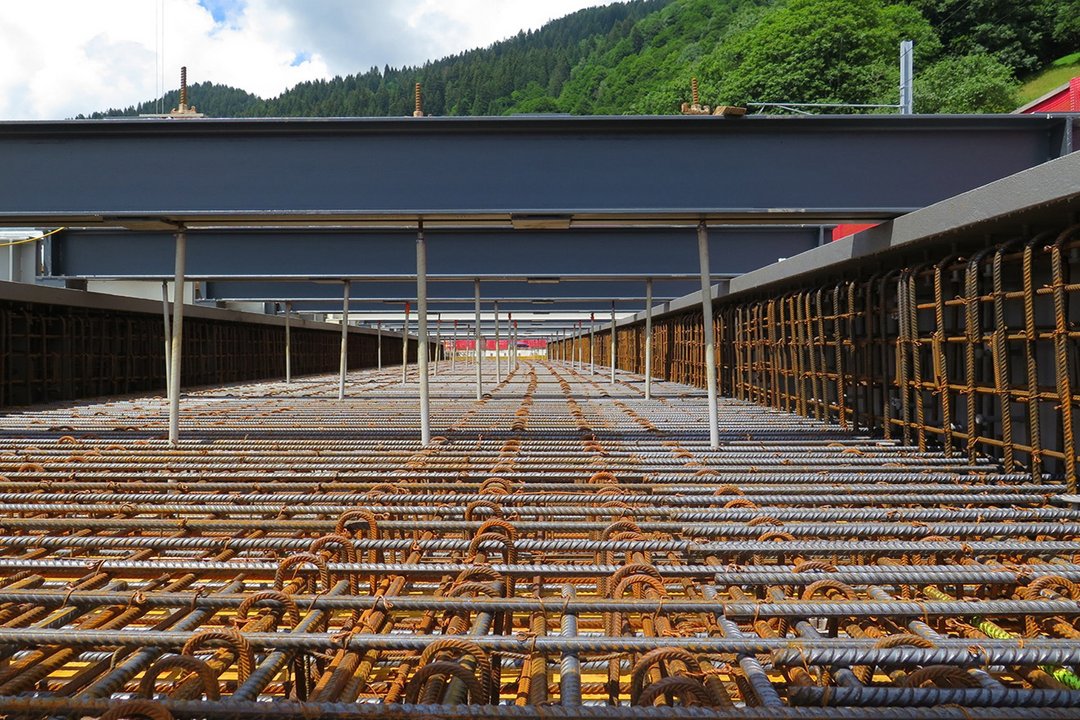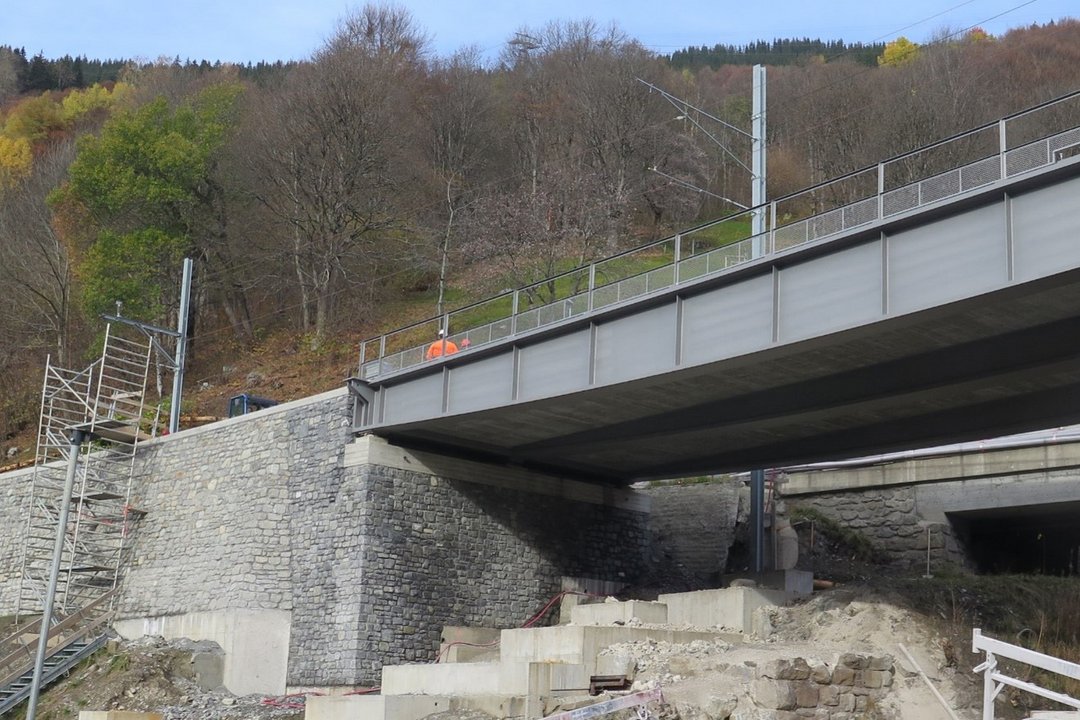Warenkorb
Sie haben keine Produkte im Warenkorb.
The Schlappinbach Bridge near Klosters has been completely renovated. The video shows the highlights of the final night shift in October 2022 and provides interesting facts about the work in an interview with Karl Baumann, Head of Engineering Structures i
Klosters-Dorf station is being renovated. The Schlappinbach Bridge is just before this station and is affected by the renovation. The previous bridge from 1889 and 1912 is single-track. Since a double track is planned on this section of the line, the existing Schlappinbach Bridge had to be replaced by a new one.

The Schlappinbach Bridge before the construction work
We examined three bridge systems when we were thinking about the new one. A simple concrete bridge with three sections, a rigid-frame bridge and a single-span steel bridge. We opted for the latter variant, a steel bridge.
The simple bridge system has several advantages in this project: it fits well into the surrounding area and is reminiscent of the old bridge, which was also a combination of steel and masonry. The bridge was built on a scaffold before being moved to its final position. Rail traffic had to be maintained during construction work – that was a decisive criterion. With the other variants, this would have been much more difficult.

Impressions of the construction work with the scaffolding
The two building materials steel and concrete were combined in such a way that the high strength of the steel can be used for load transfer. The solid concrete troughs made it possible to build a ballast track. Compared to a conventional steel bridge, this combination results in a marked reduction in noise.

Production of the railway track slab
The preparatory work began around two years ago. The civil engineering work was already completed in 2021, i.e. the construction of abutments and supports with foundations. The bridge girders were manufactured in the steelworker’s workshop and then delivered to the construction site. There were nine parts, each 12 metres long and weighing about 14 tonnes. The individual parts were lifted onto the working and moving scaffolding and work continued there. Concrete work was then carried out on the track slab. Completion work and preparations for shifting the bridge took place from July 2022 onwards.
The bridge was moved to its final position during the night of 15—16 October 2022. The movable weight was 460 tonnes and the movable distance was 9.40 metres. The challenge was to coordinate all parts of the project well. This involved the demolition of the old bridge, the shifting of the bridge itself and the trackwork before and after the bridge.
All steps in a project rarely go as planned; teamwork is required from many of those involved. Unforeseen events may occur, some work takes less time, other work is more time-consuming than planned. The work is really only finished with the last step. The work during the installation night was largely carried out according to schedule.
The track had to be closed for 14 hours overnight while the bridge was moved.
The rest of the abutment facing and environmental work, such as restoring paths, sowing embankments and restoring the stream bed, are planned for spring 2023.

The new Schlappinbach Bridge in its final position
No comment has been made yet.
What do you think?